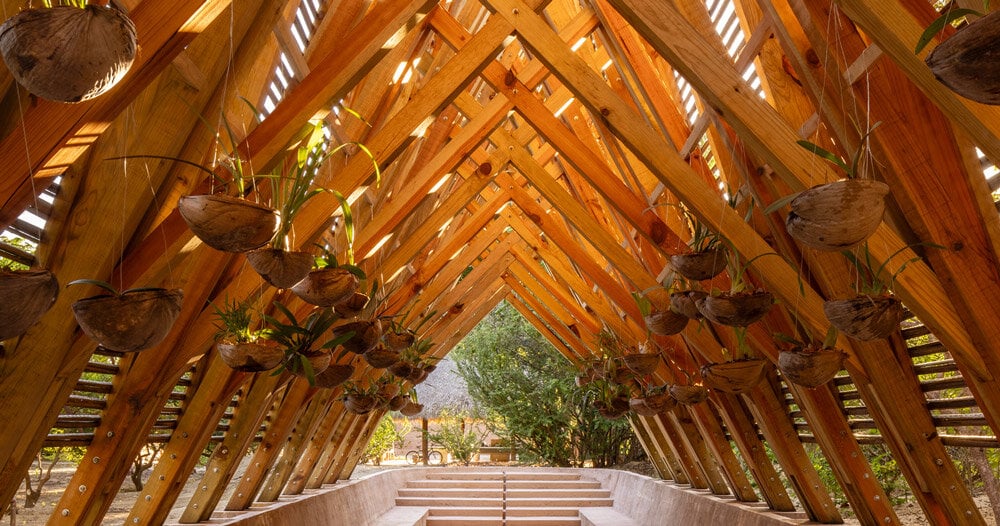
ORCHID PAVILION: A LIGHT WOODEN CONSTRUCTION
At Casa Wabi in Oaxaca, between the mountains and the sea, CCA (Centro de Colaboración Arquitectónica) designs this ‘Orchid Pavilion’ as a space to connect with the humble roots of life. Led by architect Bernardo Quinzaños for the Casa Wabi Foundation, the timber project is dedicated to the conservation of orchids in the Oaxaca region. To ensure the development of these plants, and after extensive research, the team chose to use wood, a permeable, sustainable, and lightweight material for its construction. Complemented with twelve clay humidifiers, the structure achieves a humid, partially shaded, and well-ventilated environment inside.
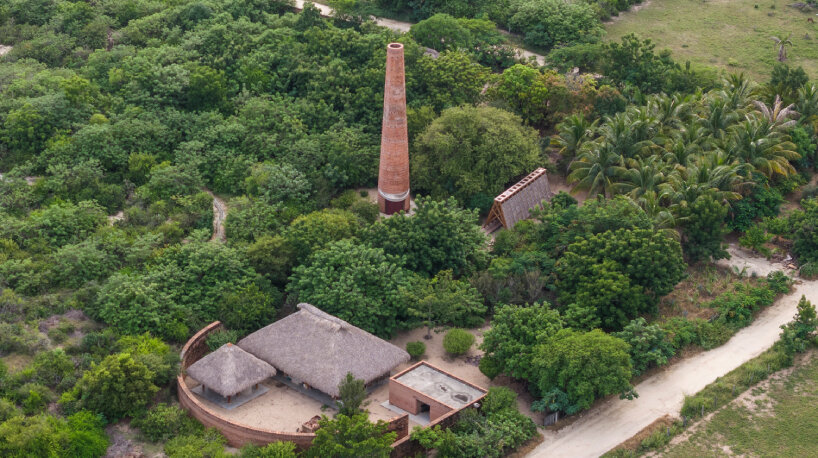 image © Jaime Navarro, Rafael Gamo
image © Jaime Navarro, Rafael Gamo
A BLEND OF JAPANESE PHILOSOPHY AND MEXICAN TRADITION
For this project, the architects at CCA drew inspiration from the Japanese word ‘ikigai,’ which translates to ‘the reason for being’ or ‘life purpose.’ To find this life purpose, it is necessary to step away from the stress and hustle of daily life; to be in a space dedicated to reflection and relaxation. Enveloped in the gentle tinkling of drops, the crosswinds, and the freshness of the humidity inside the Orchid Pavilion, the visitor is invited to reconnect with their essence, discover their ikigai. Following the Japanese philosophy of ‘Wabi-Sabi,’ the pavilion finds its beauty in simplicity, imperfection, and the unconventional. Additionally, the team blends this concept with the traditions of the Oaxacan coast, using locally sourced materials – clay ceramics, palm, and wood – and high-quality works from local artisans.
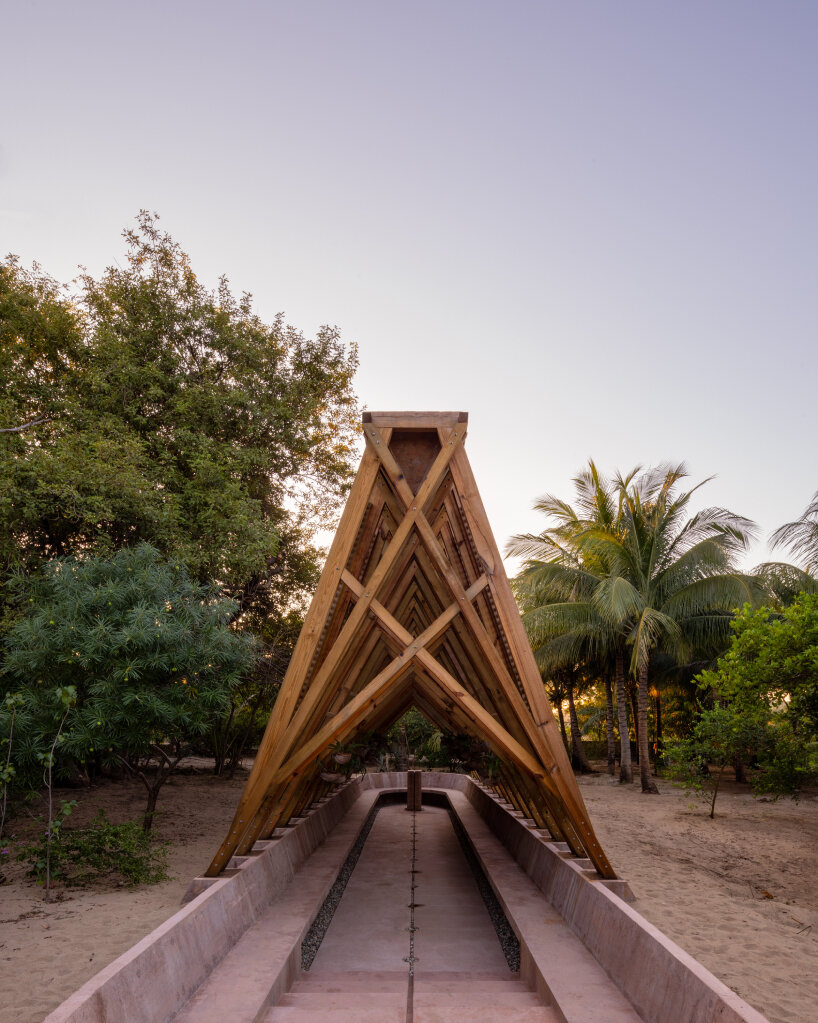
the team chose to use wood, a permeable, sustainable, and lightweight material
A structure made with simple techniques and materials
The structure focuses on three main elements. Firstly, the Orchid Pavilion is a simple and austere machine; twelve clay humidifiers take advantage of gravity to create a humid environment for the orchids of the Oaxacan coast. Secondly, the pavilion leverages simple materials and techniques; regional wood and clay ceramic pieces made in local kilns are used. Finally, the construction becomes a sanctuary for orchids. Co-inhabited by plants and humans, the space achieves harmony between natural cycles and human activity.
The humidity inside the Orchid Pavilion creates a perfect environment for the orchids. With their intricate roots, branches, and leaves, the plants utilize the water present in the air and soil. Additionally, pyramid-shaped clay bowls filled with water are placed on top of the structure. These gradually filter small water droplets, allowing for drip irrigation. Moreover, water is also collected by permanently moist clay base trays. These features ensure that the orchids remain consistently moist without the need for manual watering. This sanctuary also provides fresh water to Casa Wabi guests, creating a contemplative experience; the same water that orchids drink is consumed by humans.
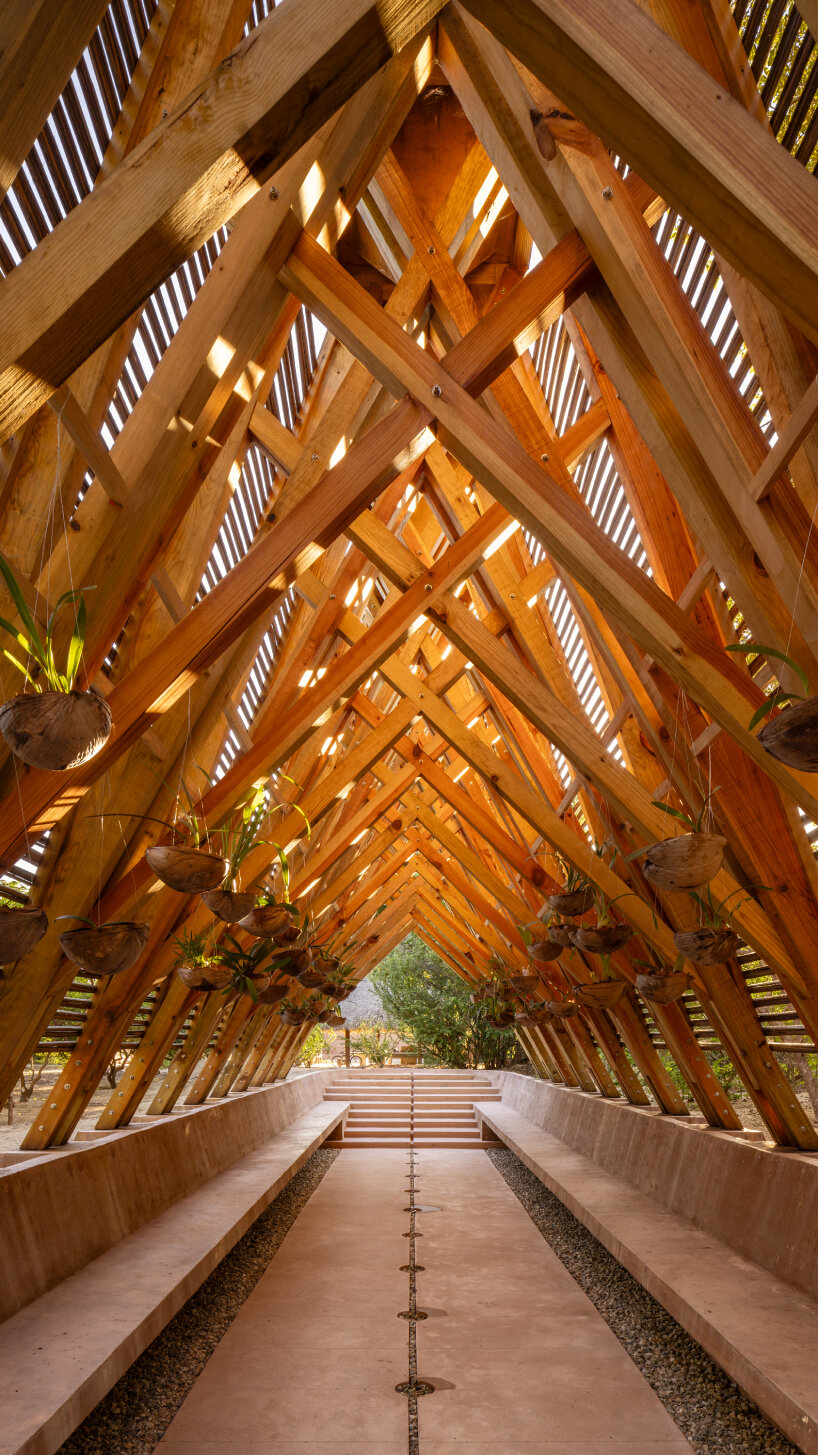
the visitor is invited to reconnect with their essence and discover their ‘ikigai,’ or life purpose
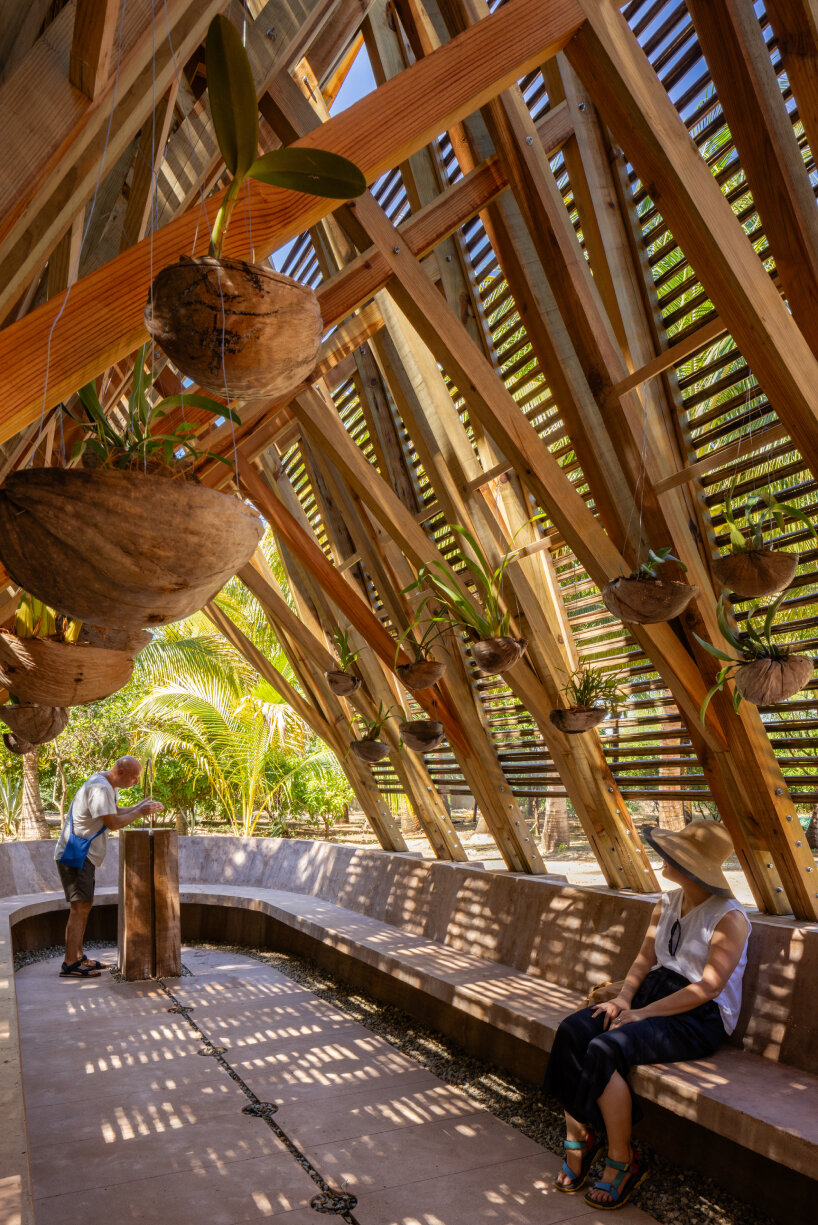
the pavilion provides fresh water to casa wabi’s guests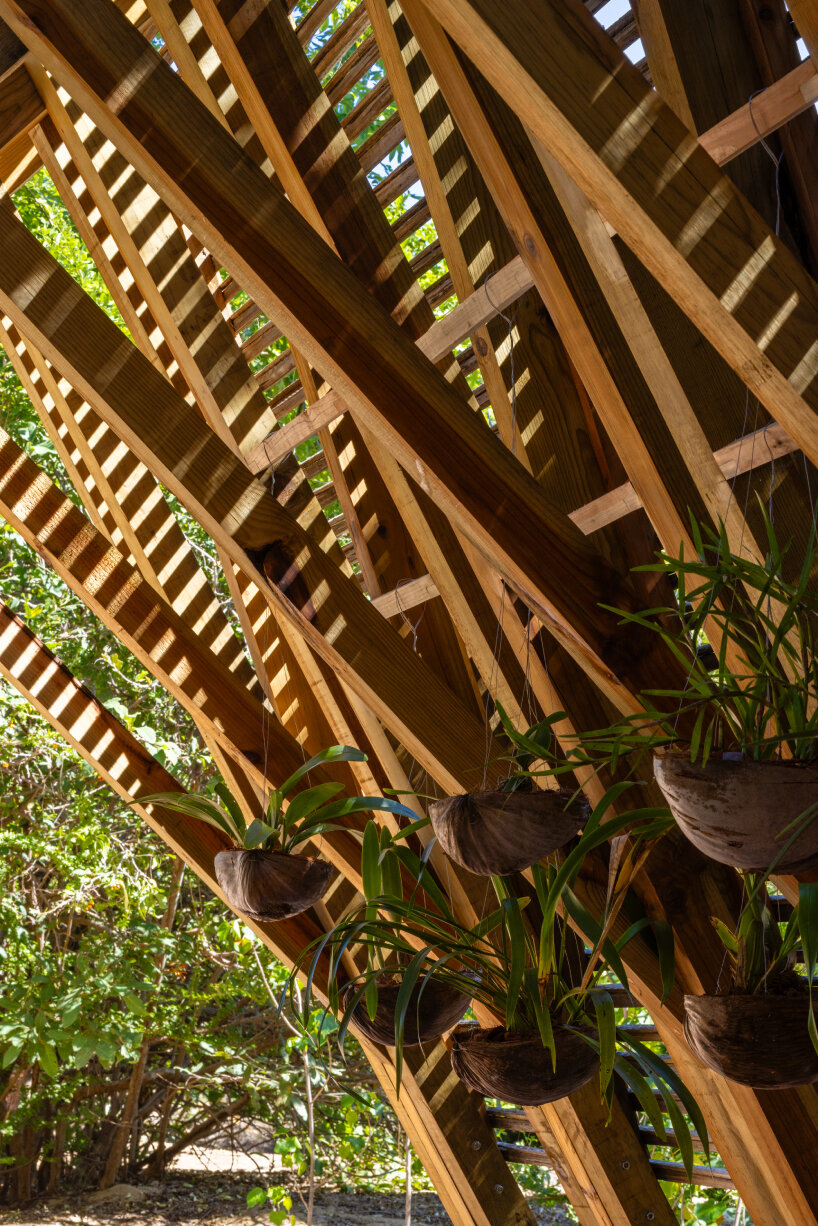
the humidity inside creates the perfect environment for the orchids









